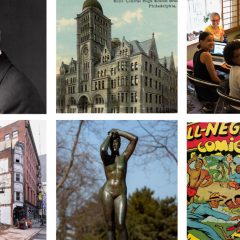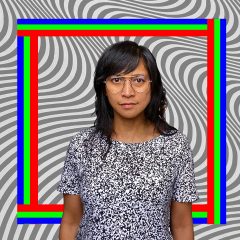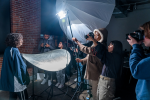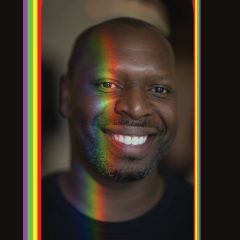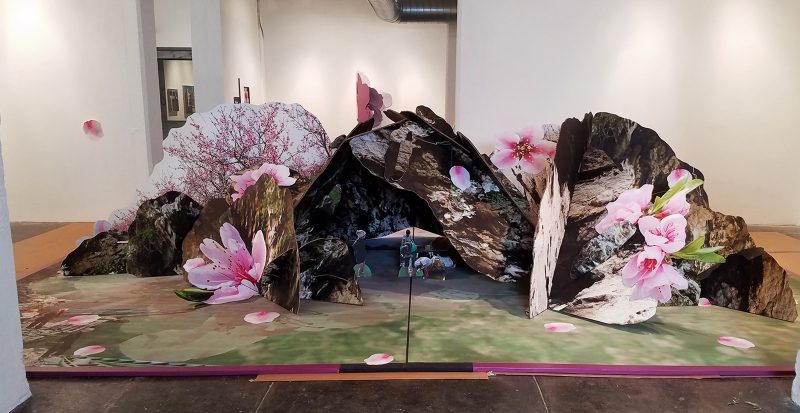
The Art of the Pop-Up Book
There is something enchanting about pop-up books. Books that come alive when you open them, that add a third dimension to a story. No wonder children love them.
Pop-up books have been around since the 12th century. They were originally conceived as moveable books to illustrate, in three dimensions, complex ideas and scientific discoveries. A person can’t help admiring the craft involved, the deft artistry of the paper engineers who work in this medium.
Imagine a pop-up book large enough that you could jump right into it, allowing you to become a part of the book, a part of the story. An experience you might have with a Richard Serra sculpture.
That’s exactly what Philadelphia artist Colette Fu is constructing at the Philadelphia Photo Arts Center. Indeed, she’s creating what will become the world’s largest photographic pop-up book. When complete, and opened, it will measure a staggering twenty-one feet long and ten and one-half feet wide, and it will pop up to just below five feet tall. It will weigh over 200 pounds — and visitors will be invited to walk (or crawl) into it.
A haven for refugees
The subject of this magnificent creation is Tao Hua Yuan Ji, a story written by Tao Yuanming, a Chinese poet who lived between 365 and 427 AD, during the Eastern Jin and Liu Song dynasties, in Xunyang. Text describing the story is presented on the wall of the gallery.
Tao Hua Yuan Ji, which translates to “Utopia: Source of the Peach Blossoms,” takes place in an idyllic valley ringed by peach trees — the Chinese symbol of luck, love, and longevity — and surrounded by a cave, an area which was a legendary and secret refuge for people escaping political unrest. In the story, a fisherman inadvertently comes upon the valley, where he is welcomed by the villagers. When he departs, however, he disregards the villagers’ plea that he not disclose their existence or location to others. Despite the fisherman’s betrayal, other people never were able to find the village.
The notion of a utopian haven for refugees, of course, is painfully relevant in the world today, where there are some 22.5 million refugees, innocent people expelled from their homelands as a result of racial/ethnic/religious persecution, political difference, or hatred of one sort or another.
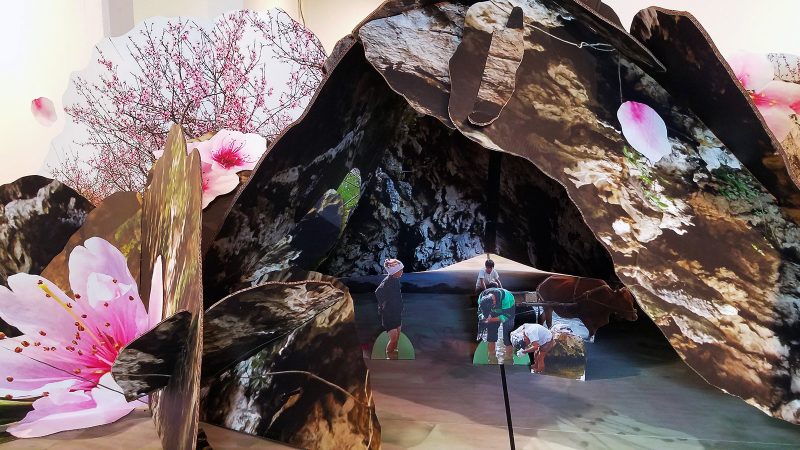
The background
Fu’s book is constructed of double-sided cardboard pieces glued upon a gator board base. Both the base and the cardboard components are faced with prints of beautiful photographs Fu took on a trip in 2008, on a Fulbright Fellowship, to Yunnan Province, in China, her mother’s birthplace (Fu grew up in New Jersey), where she discovered a village very much like the one portrayed in Yuanming’s story, including peach trees and a cave. Indeed, the people of the village that Fu visited, people of one of the many minority tribes in that region of China, claimed that their home was the valley that Yuanming wrote about. Faithful to the injunction in the story, Fu has never disclosed the location of that village.
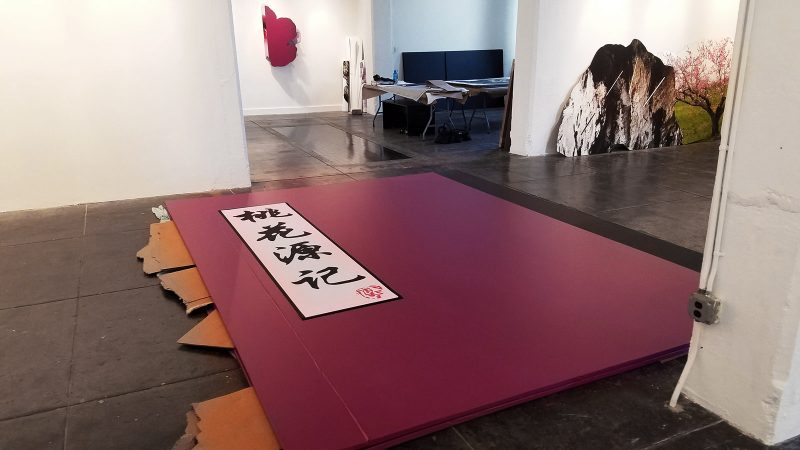
Fu, a graduate of Rochester Institute of Technology in photography, learned the pop-up book craft by taking apart pop-up books and reverse engineering them. She has developed the art since 2003, focusing primarily upon the stories and legends of many ethnic minority groups of China, including her own ancestors of the Black Nuoso tribe.
The exhibition
Tao Hua Yuan Ji will be showing at the Philadelphia Photo Arts Center, which is located in the Crane building, through November 25. The formal opening is on October 12, from 6 to 8pm, during which there will take place the inaugural opening of the book, and the work will be formally reviewed for a place in the Guinness Book of World Records. Every Saturday morning during the show, at 10:30am, there will also be a ceremonial opening of the book.
There’s a press release for the exhibition, and you can find a fascinating interview with Ms. Fu in Inertia Studio Visits, in which she discusses and demonstrates the construction of Tao Hua Yuan Ji.
A concurrent show at CFEVA
Concurrent with Tao Hua Yuan Ji, Fu is showing her work at The Center for Emerging Visual Artists. For the Ancestors features eight of her pop-up books, including an extra-large 15-foot pop-up accordion book that tells the story of a relatively unknown fishing contest of the Miao people, inspired by the pioneering pop-up books of German illustrator Lothar Meggendorfer. For the Ancestors will be showing there between October 9th and November 14th.
For more about Colette Fu, visit her website, which includes a large selection of her work. And, if you think of a home for Tao Hua Yuan Ji when the show closes, you can contact her through the website.
Tao Hua Yuan Ji, Colette Fu, Philadelphia Photo Arts Center, September 14 – November 25, 2017, and an inaugural book opening and reception, October 12, 6-8pm.


